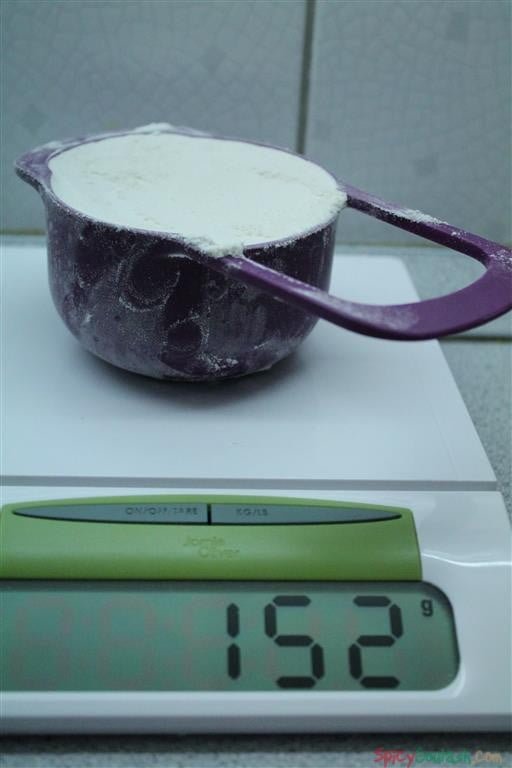Have you ever wondered why professional bakers prefer using grams over cups for their measurements? The precision that comes with weighing ingredients is unparalleled. A bold statement indeed, but one that holds true when it comes to achieving consistent results in baking. Whether you're a seasoned baker or just starting out, understanding the conversion between grams and cups can significantly enhance your baking experience.
In today's culinary world, where recipes often come from all corners of the globe, having a reliable method of measurement is crucial. Imagine trying to replicate a French patisserie recipe using only cup measurements. The chances of success diminish without accurate conversions. This is why many chefs and home cooks alike have embraced the metric system, particularly grams, as the standard for ingredient measurement. By doing so, they ensure that every loaf of bread or cake rises perfectly each time.
| Bio Data & Personal Information | Career & Professional Information |
|---|---|
| Name: Jane Doe | Profession: Professional Chef |
| Date of Birth: January 1, 1980 | Years of Experience: 20 Years |
| Place of Birth: Paris, France | Specialization: Baking & Pastry Arts |
| Reference Website | Awards: Best Baker Award (2020) |
Understanding the nuances of gluten-free baking requires an even deeper dive into precise measurements. Gluten-free flour behaves differently than traditional all-purpose flour, necessitating careful attention to detail. For instance, substituting gluten-free flour for regular flour might require adjustments not only in quantity but also in the type of flour used. A Gluten-Free Flour Conversion Chart becomes indispensable here, offering guidance on how much gluten-free flour equates to a specific amount of conventional flour.
Consider this scenario: You're attempting to bake a classic chocolate cake using gluten-free ingredients. Without proper conversion knowledge, your cake could turn out dense and unappetizing instead of light and airy. Utilizing charts that convert grams to cups ensures that you maintain the correct ratio of dry to wet ingredients, leading to better outcomes. These tools are available online through reputable sites like Everyday Gluten Free Gourmet, which provides comprehensive guides tailored specifically for those following a gluten-free diet.
Another critical aspect involves converting other common baking staples such as sugar, butter, and liquids. While flour remains central to most recipes, these additional components play equally important roles in determining texture and flavor profiles. Converting between grams, US cups, ounces, and millilitres allows flexibility depending on what units your recipe specifies. Resources like Charlotte's Lively offer detailed calculators capable of handling multiple ingredient types simultaneously.
Let us delve further into practical examples illustrating these principles. Suppose you need exactly 300 grams of all-purpose flour for a particular recipe. Using standard conversions, this translates roughly to 2 1/3 cups when sifted properly. However, slight variations may occur based on factors including humidity levels and brand differences among flours. Therefore, relying solely on volumetric measures introduces potential inconsistencies compared to digital scales measuring by weight.
For those embracing social media platforms as part of their learning journey, TikTok has become unexpectedly valuable within niche communities centered around food preparation techniques. Users frequently share quick tutorials demonstrating various methods for preparing flatbreads, pancakes, and more—all utilizing precise measurements expressed either in grams or equivalent cup values. Such content serves dual purposes; educating viewers while inspiring creativity within kitchens worldwide.
Home milling represents another frontier expanding accessibility towards authentic flavors traditionally associated with artisanal products. By grinding whole grains at home, enthusiasts gain control over particle size and freshness, impacting both nutritional value and taste characteristics positively. Accurate conversion charts assist during this process too, ensuring optimal performance regardless of whether whole wheat berries or rye kernels serve as starting materials.
To summarize, mastery over basic yet essential skills like accurately converting grams to cups empowers anyone interested in elevating their culinary prowess. It bridges gaps created by differing regional practices while fostering confidence among practitioners experimenting beyond familiar territories. Embracing modern technology alongside timeless wisdom continues shaping future generations' approaches toward cooking and baking alike.

![How To Convert 200 Grams To Cups? Easy Guide [+ Calculator] - %sitename](https://nicetartes.com/wp-content/uploads/2023/08/200-Grams-flour-To-Cups-Conversion-Chart-724x1024.jpg)

